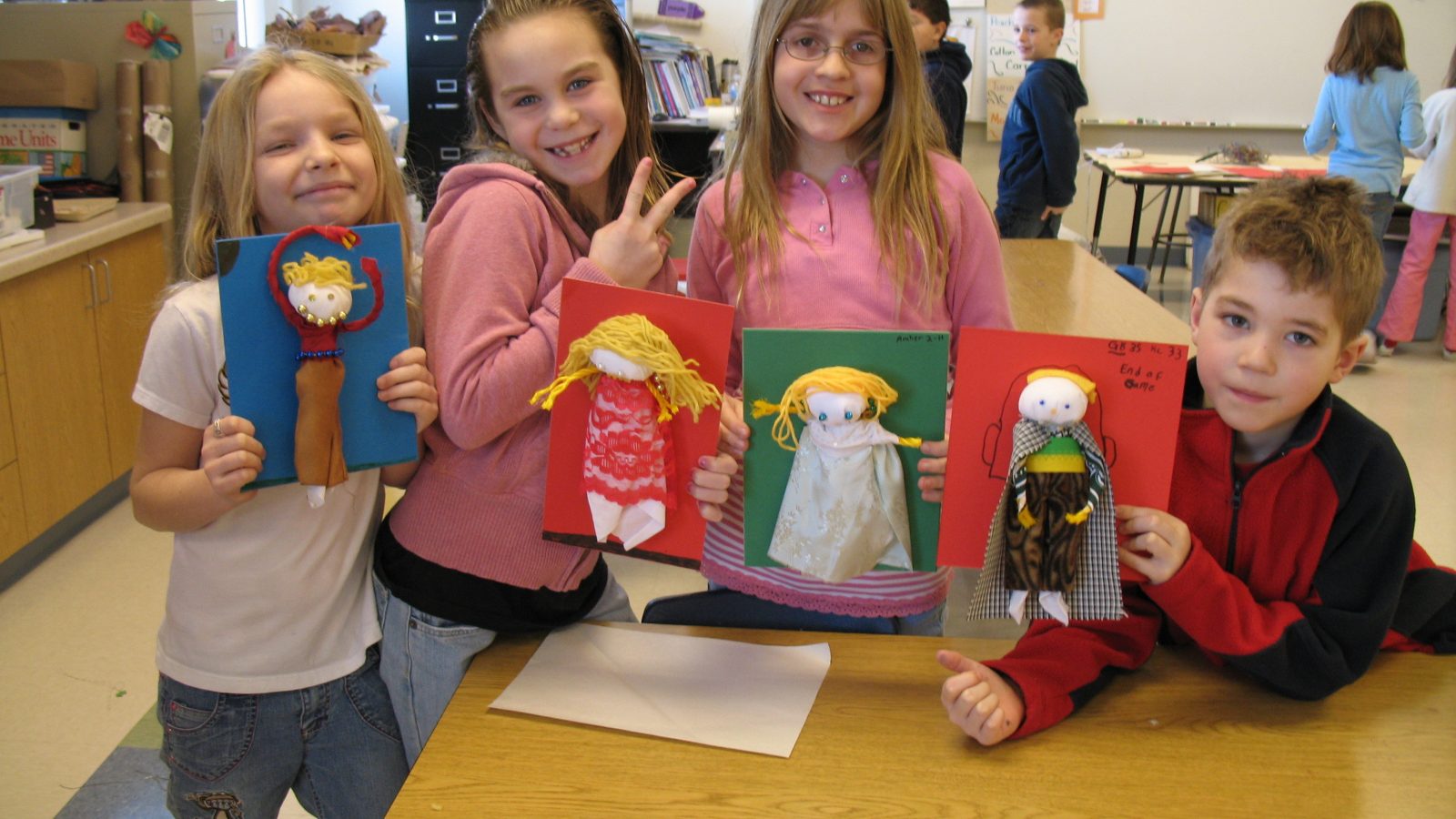A Fabric Figure is a soft sculpture, a rag-type doll or “Persona” doll. It can also be referred to as a puppet. A Fabric Figure usually represents a human person, but not always. A Fabric Figure is about 6” – 12” long, but can be made smaller or bigger. A Fabric Figure is made from scraps of fabric, batting, rope, trim, lace, yarn, other embellishments and assorted objects.
Fabric Figures are small scale human representations which can tell us something about the human condition. All cultures throughout the ages have made miniature representations of the human form. Fabric Figures or rag dolls serve as playthings for children, who learn life’s lessons through play. Children learn how to nurture other people by taking care of Fabric Figures, rag dolls or puppets. We give children Fabric Figures or dolls when they are about to embark upon important journeys, to give them a sense of security. When dolls accompany children, they carry a piece of home with them.
To make a Fabric Figure of your own, begin by collecting fabric, yarn, batting, rope, trim, lace and other items to include in your Fabric Figure. All elements of the fabric figure can be hand-sewn, or made with a combination of hand sewing, machine sewing, and gluing with a hot glue gun.
The first step in constructing a Fabric Figure is to make a head and body. Use a small handful of batting or similar material inside a square piece of fabric roughly 12’ square or so. Use a color fabric that is the color you want your Fabric Figure’s face to be. Use a 10” or so piece of 3/4” thick rope to tie around the figure’s neck. The extending pieces of rope form your figures arms. (I prefer to use natural rope rather than plastic rope which tends to slip and not hold firm when tied.) At this stage, your Fabric Figure looks like a ghost. You can use the fabric hanging down from the head to add bulk underneath a skirt, or you can cut it into 2 pieces to use to stuff into pants legs.
The next step is to make a skirt or pants. You can gather fabric by hand for a skirt, or wrap fabric around your person for a tighter skirt. For pants, one method is to wrap fabric around the 2 segments you created by dividing the fabric hanging down from the head. I often use my sewing machine to gather skirts and make simple pants ahead of time, if I am making Fabric Figures with groups of children. Next, create a top. Use strips of fabric to wrap the arms for sleeves. You can experiment with different styles of sleeves. Also wrap strips of fabric around the middle section as the body of a shirt or blouse. Add final touches – yarn for hair, bottle caps for shoes, vinyl fabric for a cape – feathers for a hat – let your imagination go wild!
Your Fabric Figure is a typical rag doll – depending on your construction method, it might not take a lot of abuse. You might want to put it on display, rather than playing with it repeatedly. Display your Fabric Figure by pinning it onto a piece of mat board, placing it in a basket, or making a fabric sleeping bag for it. You can use heirloom fabric for your Fabric Figure – fabric from a wedding gown, or quincenera dress, favorite upholstery fabric from your grandmother’s sofa, or scraps from an old embroidered tablecloth. Fabric Figure gifts made from heirloom fabric will be gratefully received and treasured forever!
